As a rule, I'm a bit lame when it comes to test reports. I haven't written a review for the iPhone X yet, although it really deserves one. I am all the more proud that I was able to test the HomePod quite quickly. In this article, I would like to show you how the smart HomeKit speaker from Apple performs in practice. However, I cannot provide a real "long-term test" because I have only been using the HomePod for a few days and for this reason I have certainly not yet been able to play through all possible everyday situations.
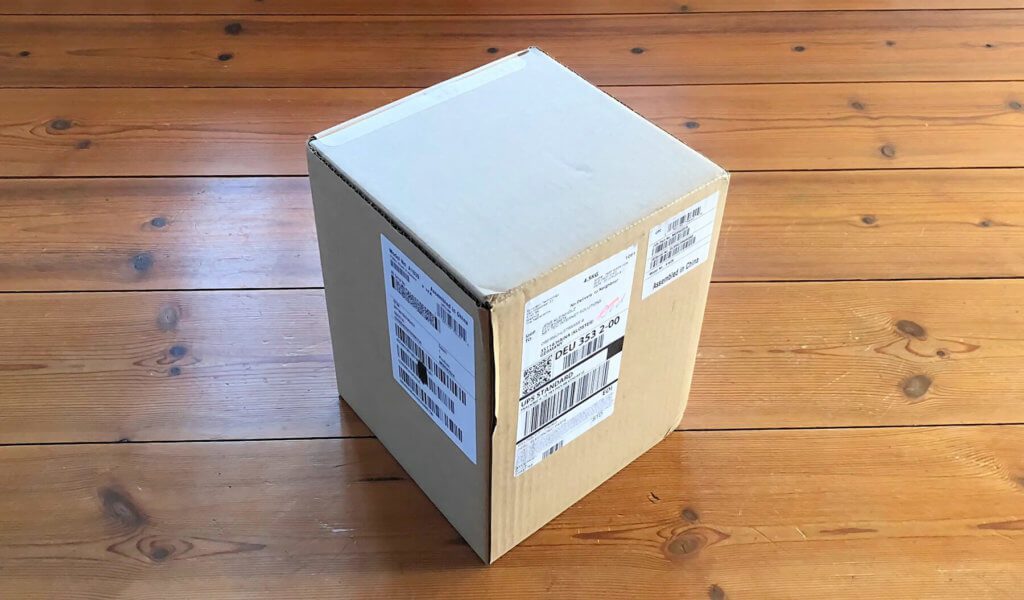
Chapter in this post:
- 1 packaging - typical for Apple!
- 2 Technical data
- 3 HomePod user guide
- 4 HomePod power consumption
- 5 voice and touch commands for music control
- 6 Setting up the HomePod - only with the iPhone or iPad
- 7 HomePod status indicator
- 8 Design and workmanship
- 9 The sound - lots of bass and space-filling
- 10 The microphone system
- 11 HomePod and Spotify - not possible ...
- 12 The benefits of the HomePod
- 13 HomePod as a HomeKit hub and Siri interface
- 14 Positioning HomePod
- 15 Who is the HomePod for?
- 16 My conclusion on the HomePod
- 17 Siri's weak point
- 18 Similar posts
Packaging - typical for apples!
The packaging of the HomePod is - as always with Apple - practical and elegant. Even the brown shipping box has a practical feature: if you fold the lid to the side, a "mechanism" lifts the actual HomePod packaging so that you can get to the device more easily. And the foils around the packaging also have a nice feature: If you pull open the top cover of the foils, all four side parts slowly fold to the corresponding sides and thus reveal the product packaging.

From my point of view, the whole packaging department is not a reason to rate a product positively or negatively, but I find such things show a certain amount of attention on the part of the manufacturer to little things, which you then - in the best case - also find in the product.
Technical data
As always in my reviews, I will of course also go into the technical specifications of the HomePod. Before I bought it, I had read about the size and dimensions of the HomePod and had slight concerns as to whether you would actually get enough sound from such a small speaker to fill my open kitchen-living room with sound. You can read below whether it worked, but here are the data about the device first:
- Dimensions: 172 mm high and 142 mm wide (barrel-like design)
- Weight: 2,5 kg
- Color: space gray or white
- Drivers: 1 woofer and seven tweeters (installed radially)
- Microphones: 6 pieces (installed radially)
- HomeKit compatible (appears in the “Home” app)
- Stereo: yes, use as a stereo pair possible; But also as a single device emits the corresponding channels to the left and right
- AirPlay 2 compatible, so multiroom capable
- Can only be used with Apple Music; Spotify or other streaming services are not supported
- Audio formats: HE‑AAC (V1), AAC (16 to 320 kbps), Protected AAC (from iTunes Store), MP3 (16 to 320 kbps), MP3 VBR, Apple Lossless, AIFF, WAV and FLAC2
- Wireless technologies: 802.11ac WLAN with MIMO, direct guest access, Bluetooth 5.0
- Operating temperature: 0 ° C to 35 ° C
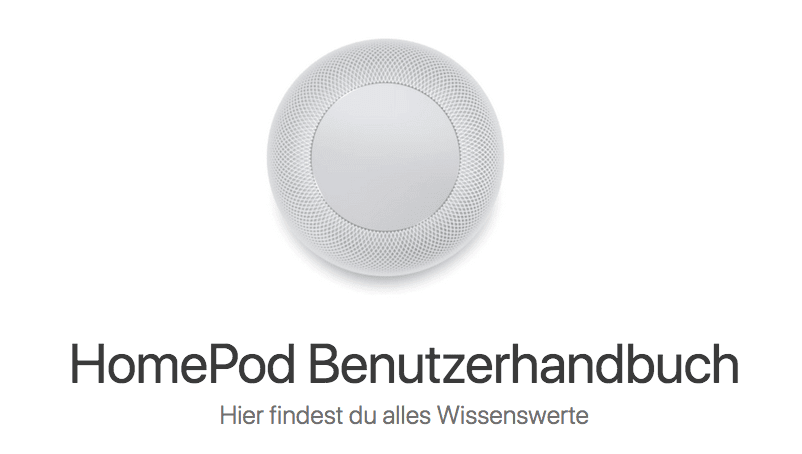
HomePod user guide
Actually, I only read manuals if there is absolutely no other way. In this case, I got there quite early: I couldn't understand all the HomePod's setting options directly and wanted to know which function is hidden behind “adjust volume”, for example. If someone feels the same way, they can contact the official instructions from Apple read in. Most of the configuration options can be reached via the Home app, but some are also hidden in the “Accessibility” area under “Settings” on the iPhone. You can find more about this in my article about the HomePod settings.
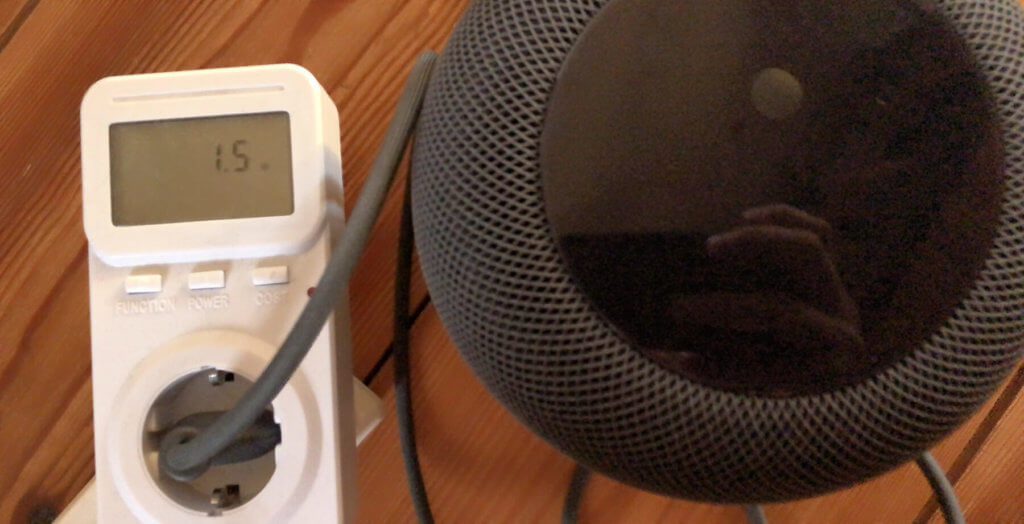
HomePod power consumption
For all devices that I permanently connect to the power grid, I am interested in how much they consume. Accordingly, I ran my power meter and measured the power consumption of the HomePod in different situations. Activation with “Hey Siri!” I left it activated so that he also listens permanently.
- Plugged in in standby (with TV noises in the background): approx. 1,5 watts
- Siri activated with "Hey Siri" and waiting for the command: briefly 5-6 watts, then consumption drops to 5 watts for about 4 minutes and then drops to the 1,5 watts mentioned above
- Playing music at approx. 30% -50% volume: approx. 5-6 watts
What is striking is the power consumption after activation with the command "Hey Siri!". I assume the HomePod stays on standby for about 5 more minutes and uses 4 watts during this time instead of the usual 1,5 watts in standby.
Also surprising to me was the fact that the power consumption was no higher than 5 to 6 watts, even at a volume that I felt was “too loud” for my room. That's an impressively low value for a speaker that not only plays music but also listens to commands.
For the electricity price calculators among you: If you only had the HomePod in normal operation for a whole year, in which it listened to the command “Hey Siri”, then you would only have electricity costs of 4 euros. But even if you were to use it around the clock (24*7*365) for sound reinforcement, you would only get about 15 euros per year (at a kWh price of 0,31 euros). So a manageable expense considering the fun you're having with it. ;-)

Voice and touch commands for music control
If you have started the music playback on the HomePod, you can influence it both by voice command and via the touch display on top of the device. The commands that can be entered via the touch display are these here (source: Apple Support Document 208248):
- “+”: louder
- "-": quieter
- tap once: pause / play
- tap twice: to the next song
- tap three times: go to the previous song
- Hold down for approx. 1 second: activate Siri
With commands you can type after “Hey Siri!” says, you can basically achieve the same thing. However, what I find useful is the volume adjustment. Siri also accepts commands like "Hey Siri, turn the volume down to 20%." or “Hey Siri, turn down the music”.
Set up the HomePod - only with the iPhone or iPad
When you have successfully unpacked the HomePod, you carry the small device to the place where it will do its job in the future. Then you plug in the power plug and wait about 10-20 seconds. After this time, a pulsing cloud will appear at the top of the display and a sound will be heard to indicate that the HomePod is working. After about 30 seconds, a message will appear on the iPhone (or iPad) that the HomePod has been found and can now be set up.
The setup itself takes just a few steps. You allow the Apple ID and WiFi data to be transferred to the HomePod on the iOS device, so that the device is already integrated into the network. You just need to choose the room that you want to assign to the device for SmartHome management and you're ready to go. Before you start experimenting on your own, Siri gives you a few sample questions and commands to deal with. And of course it motivates you to play the first song as soon as possible.
As with the Apple TV, setup is pretty simple and straightforward. No awkward typing in of any access data ... that would also seem relatively old-fashioned to me.
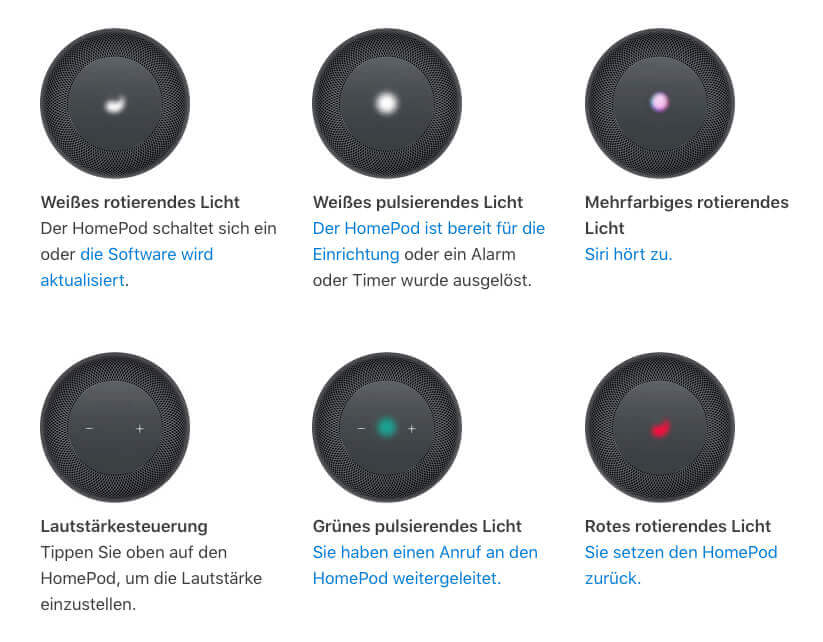
HomePod status indicator
I discovered a very helpful thing on the Apple support page. Here is an explanation of the HomePod's status indicator at the top of the touch display. The signals show what the device is doing:
- White rotating light: The HomePod turns on or the software is updated.
- White pulsing light: HomePod is ready to be set up, or an alarm or timer has gone off.
- Multi-colored rotating light: Siri is listening.
- Plus and minus signs: Volume setting is active.
- Green pulsing light: You transferred a call to the HomePod.
- Red rotating light: You are resetting the HomePod.
Design and workmanship
From my point of view, you can only give full marks here. I think the small bin, which is somehow reminiscent of the Mac Pro, is very successful. I like the round, knobbly design very much and the power cord is covered with fabric and in a quality that one would often want.

The HomePod is covered all around with a mesh, under which there is a material that feels like hard memory foam. You can lift the HomePod with one hand and your fingertips press lightly (2-3 mm) into the material, but without leaving permanent marks.
On top of the HomePod is a touch-sensitive display that's black most of the time. When you say "Hey Siri!" activated the language assistant, the typical, colorful Siri symbol lights up at the top, showing that commands or questions can now be transmitted. When HomePod is playing music, you'll see a subtle plus and minus sign at the top that you can use to change the volume. If you touch the surface at another point, the playback is stopped or started.
Overall, the design looks very valuable and thus fits in with the high-quality workmanship of the other Apple products. Another quick note: while the power plug looks like it's permanently attached to HomePod, you can pull it out with a little determination. It comes out with a juicy "slag" and you have to push it back in just as hard. Apple itself warns users not to do this, as pulling on the power cord could cause internal damage to the HomePod. So if you do it anyway, I've officially advised you against it. ;-)
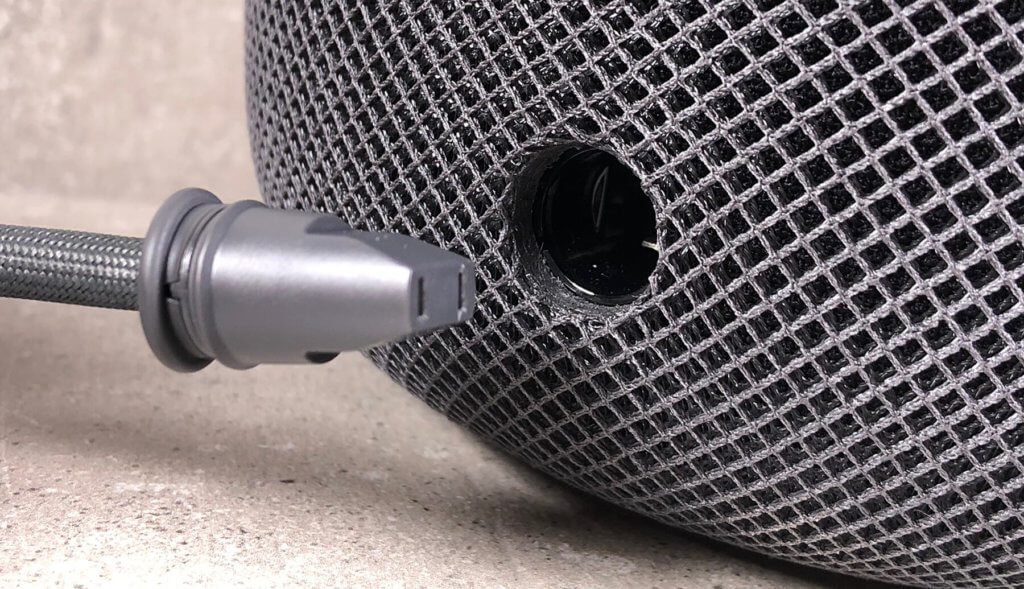
The sound - lots of bass and space-filling
When it comes to the sound of speakers, opinions often differ. I think the speaker already deserves praise. Due to its size of less than 20 cm in height, I did not expect that it would be able to “fill” my room with an area of approx. 40-50 square meters. This is made more difficult by the fact that there is also a kind of gallery here, so that the room also has a lot of “free space” at the top. Still, the little HomePod is absolutely enough to cover it musically.
However, you can also clearly hear that the Beats engineers were probably involved in the sound design. Overall, the sound is strongly represented in the bass range. From my point of view, this is not disturbing, since the basses are still crisp and speech does not degenerate into a rumble. Audiophile people who prefer “clean” speakers like the RIVA Turbo X prefer, but probably won't be that happy with the HomePod. However, the sound should be aligned in such a way that the majority of HomePod users are satisfied with it. It's a shame that Apple doesn't offer an equalizer function here in order to adjust the sound even more to your own needs, but that was almost to be expected.
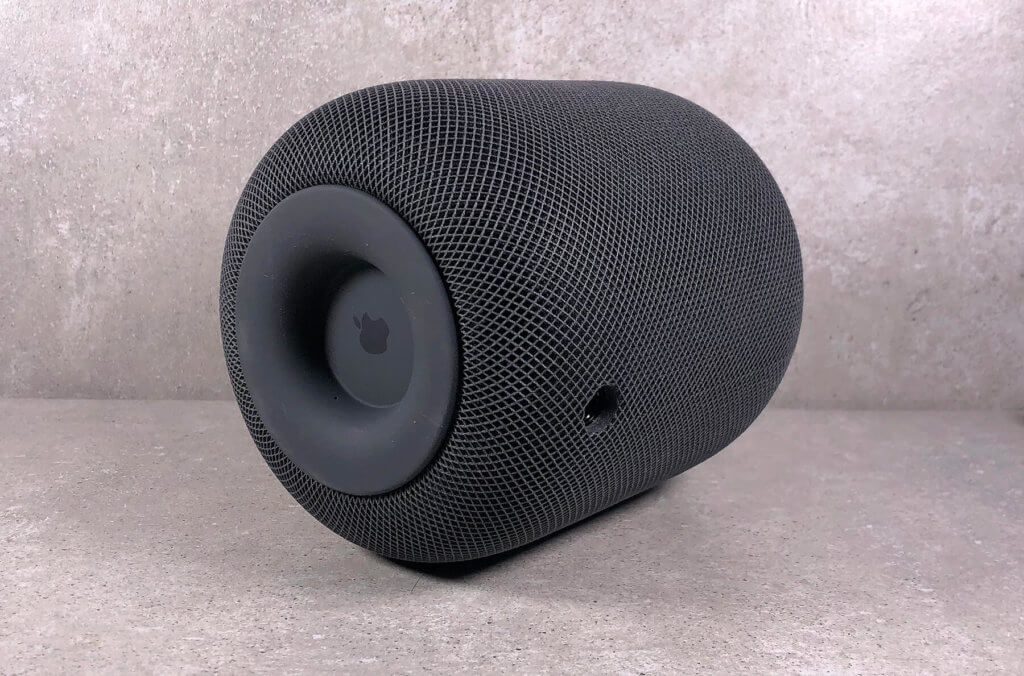
For example, the criticism I've heard here and there about the sound is that the mid-frequency range is drowned out by the strong bass range. I can understand that, but I think extremely audiophile people will probably prefer larger speaker systems anyway and not listen to their music via a smart speaker and streaming services. Acoustically I'm relatively easy going and I think most of the other people feel the same way. For us, the HomePod is definitely a practical and “smart” speaker with a decent sound.
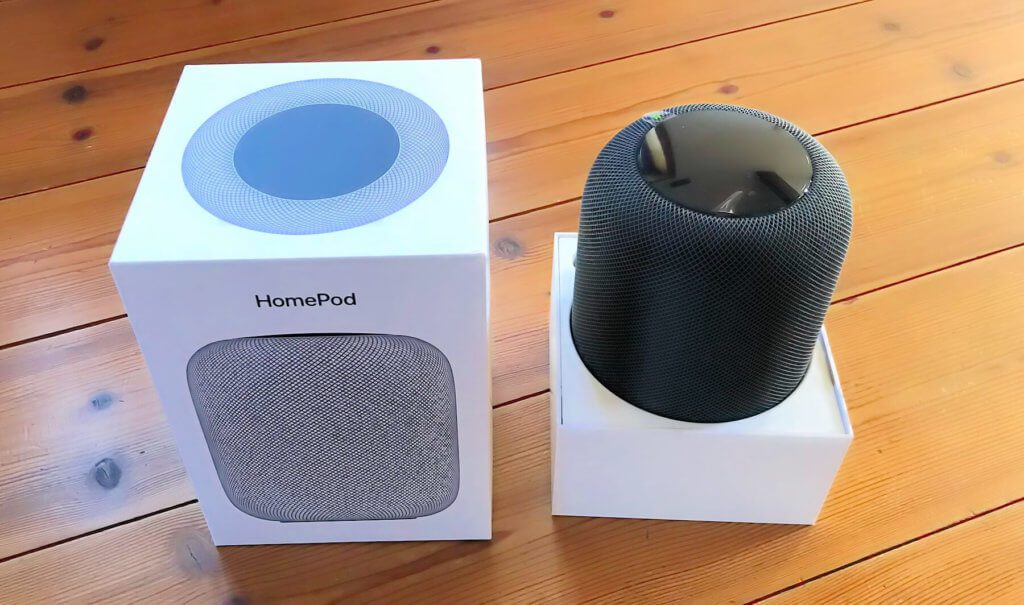
The microphone system
In order to give commands to the HomePod-Siri, you don't have to stand directly next to the loudspeaker. I once consciously experimented with it. In a quiet house, I was able to speak commands at normal conversation volume from about 6 to 7 meters away and Siri understood them surprisingly well. But even at the dining table with three children chatting loudly, commands from Siri were well recognized. With the six microphones that Apple has installed in the HomePod, they have really achieved astonishingly good speech recognition.
Incidentally, there is no need to worry that the “other Siri” on the iPhone or iPad will accidentally start up. I have the feeling that the HomePod Siri always prefers to take commands and only cedes them to other Siris when they can no longer understand themselves. If you still want to give commands to your iPhone Siri, you have to speak directly into the iPhone or activate Siri by pressing a button on this device.
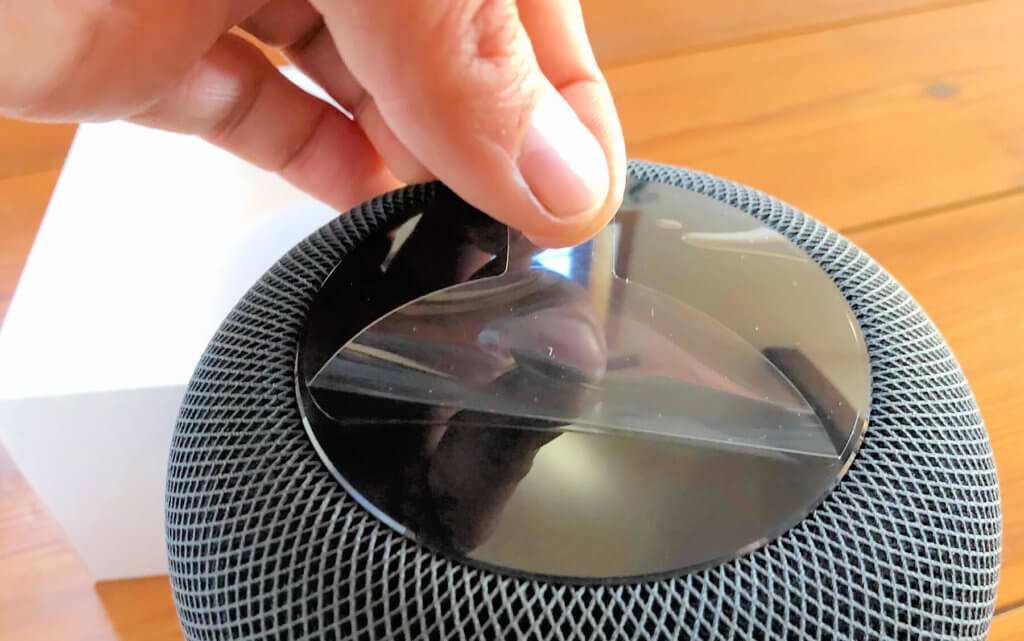
HomePod and Spotify - does not work ...
One of the most common HomePod questions is “does Spotify work on HomePod?”. Clear answer: no. Only Apple Music is natively supported by the HomePod. That means you can start music playback on the HomePod and the iPhone has nothing to do with it.
Playback of Spotify or other streaming services is not intended. The only way to play your Spotify playlist on the HomePod is to start playback on the iPhone or iPad and then control the HomePod as a loudspeaker via AirPlay. Unfortunately, the downside is that it makes the iPhone work with the HomePod. If you stop playing music on the iPhone or walk out of the house with the device, the music on the HomePod stops.
It is probably out of the question that Apple will offer a different solution here in the future. The HomePod maker is obviously more interested in pushing its own music streaming service than integrating Spotify and other services.
The advantages of the HomePod
After a few days of use, you naturally ask yourself what advantages the smart home speakers offer that you didn't have before. In my case, this is clearly music playback, which is now independent of the iPhone. Before, my iPhone was often hijacked by my kids so they could listen to audio books or music. If messages then came in, the audio book became quieter or the iPhone kept making a “ping” in between when Whatsapp slid in. Even "briefly" making phone calls with the iPhone in between has always caused displeasure among the kids, as I interrupted exciting passages in the audio book.
Now the children can - without my iPhone - start an audiobook or a music request of their choice using a voice command and I can simultaneously listen to a podcast on my iPhone with my headphones or make phone calls with the Airpods. That relaxes the whole home electronics family thing immensely. ;-)
We also now hear significantly more music than before. You can finally start a song without an extra Bluetooth speaker, which is then still played back in a pleasant sonority and does not hum softly on an iPhone or iPad. So the HomePod has made us significantly more “musical”!

HomePod as a HomeKit hub and Siri interface
Another great benefit of the HomePod is its integration with HomeKit. It not only serves as a HomeKit hub and thus offers permanent control of HomeKit devices, even if you are no longer logged into your home WiFi with your iPhone, but it also provides a Siri interface.
Because it also understands voice commands that are given from a greater distance, it enables HomeKit devices such as lights, sockets or similar to be controlled, even if the commander does not have an Apple Watch or iPhone with them. This is very helpful for my kids as they can now control switchable outlets that I have lights plugged into with commands like “on bedroom light”. Of course, sooner or later this will also provide some fun once the kids understand what you can do with it. But I think at some point – when you have switched on the light in your bedroom from the toilet for the tenth time at night – it will become “appropriate use”.
Positioning the HomePod
As you can read in the description of the HomePod, after configuration it carries out an acoustic measurement of its surroundings in order to optimize the sound. This process should also be restarted every time you change it. This happens automatically when you take the power off and then plug it in again.

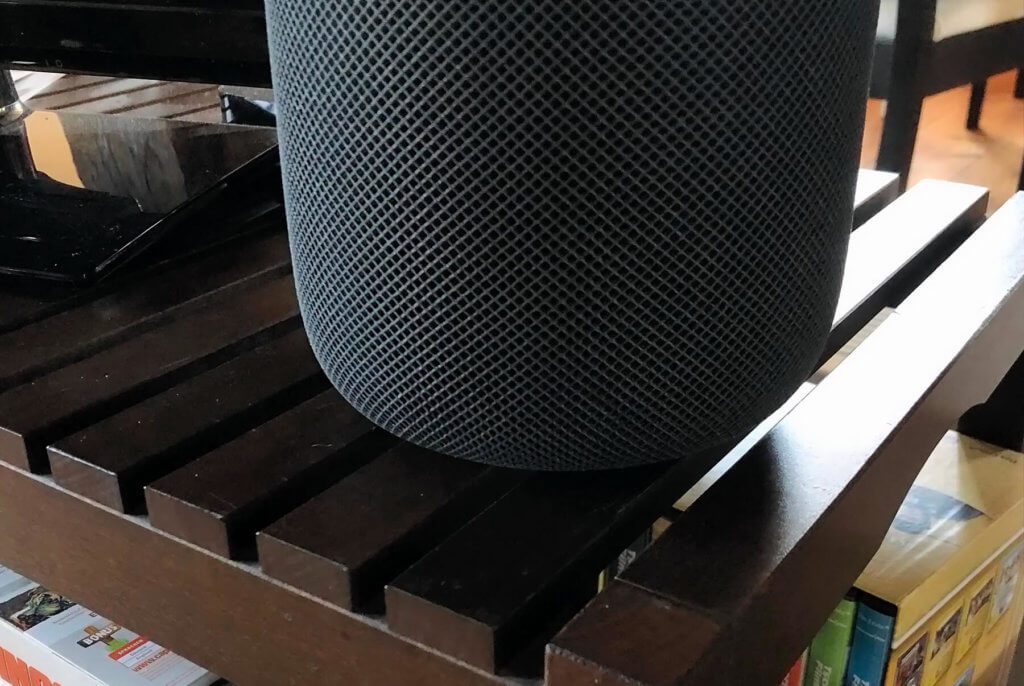
Who is the HomePod for?
Admittedly, the 349 euros for the HomeKit speaker is not exactly cheap, but if you look around at Bluetooth speakers that have a similarly good sound (Sonos Play 3, Bose Soundlink or Bose Soundlink Revolve), you quickly end up at 200 to 250 euros - and then you don't have Airplay 2 support. And of course, as an Apple user, you pay the usual "fine surcharge" without twitching the corner of your mouth and then just put the 350 euros (or 700 euros for a stereo pair) on the table... ;-)
Ultimately, however, it is above all the seamless integration into Apple's iPhone, iPad or Mac environment that justifies the additional price. I've always been happy with Bluetooth speakers so far, but it's so much easier to control the HomePod from Apple devices because it is quickly available on all devices at the same time, while Bluetooth speakers have to be paired again and again in the Bluetooth menu when you have previously controlled it with another device. Even the Bose Soundlink Mini, which I also use, can only remember three devices and with two MacBooks, an iPad, two iPhones and an Apple TV it reaches its limits.
The second important point that makes the use of the HomePod appear sensible is the use of the Apple Music streaming service. If you are more of a friend of Spotify, you should probably rely on alternatives such as Sonos. These offer the integration of various music services and also allow features such as multiroom playback or latency-free airplay. However, if you have already booked Apple Music, then from my point of view nothing speaks against using the HomePod.
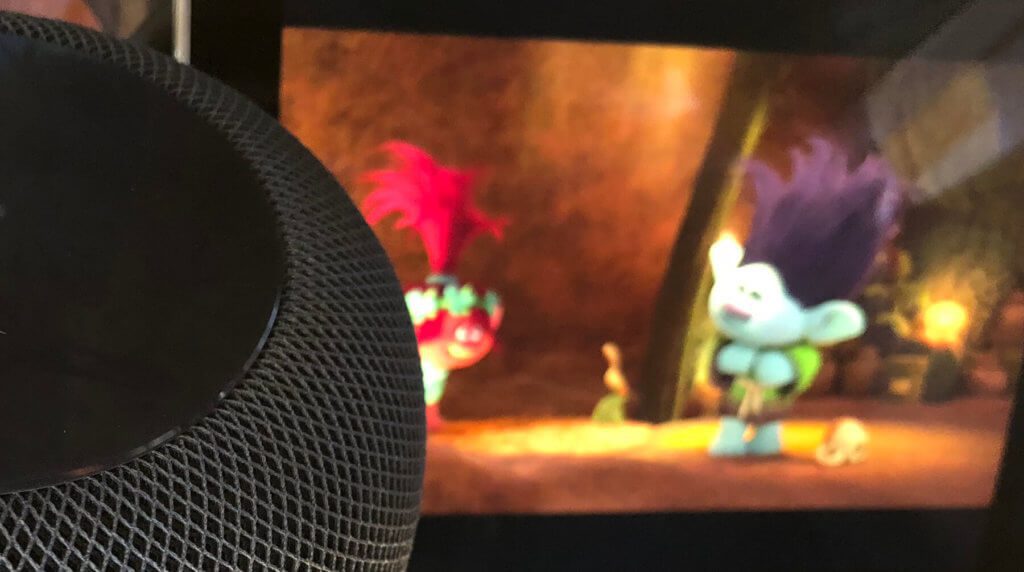
My conclusion on the HomePod
There are devices that you only notice how practical they are when you have them in operation. I had this experience, for example, with the Apple Watch, which I diligently “sat out” until last year because I hadn’t had anything on my wrist for years and couldn’t imagine that a Smart Watch could take this place. I've had it on my wrist for almost a year now and can't imagine how I was able to live without a watch the whole time. Of course it works, but “with” is somehow more practical.
With the HomePod, I already have the feeling that it is also becoming such a device. When, after just a short time, I see how naturally the children start playing pieces of music or audio books via the HomePod, then I realize that it was worth it for them alone. I now listen to more music myself, because it doesn't "hog" my iPhone and you can easily provide good background music while working with simple voice commands from your desk.
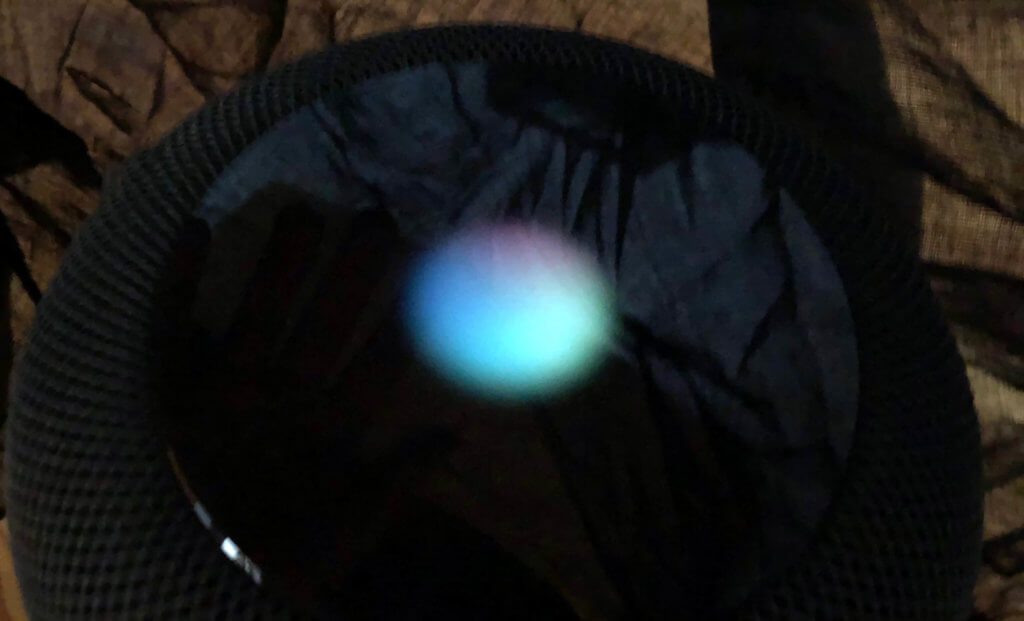
Siri weak point
The only point of criticism I have about the HomePod is not actually about the device itself, but about Siri: When I ask questions like "Hey Siri, play children's music" or "Hey Siri, play song XYZ", I often get such strange titles that the intelligence behind Siri just has to be a bit "stupid". In rare cases, Siri misunderstands what is being said. Much more often I have the case - also on the iPhone - that Siri recognizes the wording correctly, but processes it with no intelligence and corresponding nonsense comes out.
I think Siri is one of the biggest and most important building blocks for Apple over the next year or two. Too often the voice assistant disappoints when executing commands. I've settled on simple jobs like "Set the timer for 10 minutes!" in the past for this reason. limited so as not to overwhelm Siri. With the HomePod, however, Siri gets a new chance – with me too. If Apple keeps scaring users away with a stupid language assistant, the HomePod will degenerate into a pure AirPlay speaker in the long term because nobody has any more trust in Siri's abilities. I hope it turns out differently...
What do you think of the HomePod and Siri's capabilities? Feel free to leave your opinion as a comment here!
Related Articles
Jens has been running the blog since 2012. He acts as Sir Apfelot for his readers and helps them with technical problems. In his spare time he rides electric unicycles, takes photos (preferably with the iPhone, of course), climbs around in the Hessian mountains or hikes with the family. His articles deal with Apple products, news from the world of drones or solutions to current bugs.

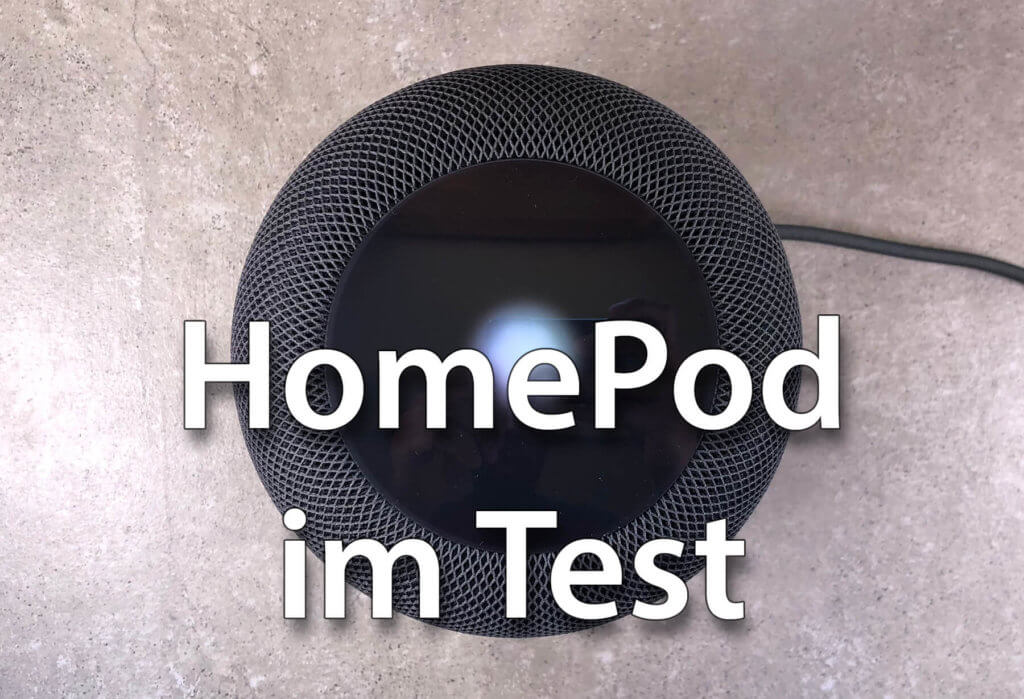
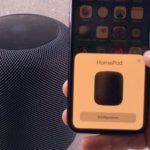








![[Update] Overview: Battery capacity (mAh & Wh) of the Apple iPad models](https://a391e752.rocketcdn.me/wp-content/uploads/2024/04/ipad-battery-capacity-mah-wh-150x150.jpg)

If I want to listen to music at home, it is from my high-end system (vinyl, CD, DAC). It's old-school and elaborate, but the sound is and remains unsurpassed. The Homepod is certainly very practical and, in my experience with the Amazon Echo, these are devices that quickly pile up in front of them in any closet and then turn into electronic junk. I would rather / better donate the money to a social organization. On the go, I prefer to listen to music from my IPhone / IPod.
Hello Horst! Yes, old school isn't always the worst. ;-) For people who value very good, balanced sound, the HomePod is just as unsuitable as any other smart speaker or Bluetooth speaker. I think the HomePod is particularly suitable if you often use Bluetooth speakers anyway and / or control some smart home devices with HomeKit. Then he plays to his strengths. VG! Jens
Hello! So I currently have 4 HomePod Minis in use. 1x bedroom, 1x study, and 2 in the living room / kitchen as a stereo pair. I find that very practical. So my female can tell me via intercom that the meal is ready.
The stereo pair also runs well on the AppleTV in the living room. Clearly not to be compared with a high-end soundbar or other sound systems, but completely sufficient for a cozy evening series.
In addition, I'm about to get away from Alexa. We have many SmartHome products (bulbs, sockets). Nothing can be controlled under Alexa when the internet has a problem. A bad-tempered wife is inevitable. It's different with Apple. Maybe also a decision aid. The SmartHome products also work offline, only an existing WLAN system must of course be available. (Subject of data protection)
I also find the radio to play more reliably than under Alexa.
So I am very satisfied and will get another one for the cellar. Then the last Alexa can also be thrown in the bin.
Thank you for your interesting article.
Hello Pe! Thank you for your interesting information. I didn't even know that the commands would also work offline. My iPhone always complains when Siri is out of internet. But maybe the Smart Home control will still work if you don't use Siri.